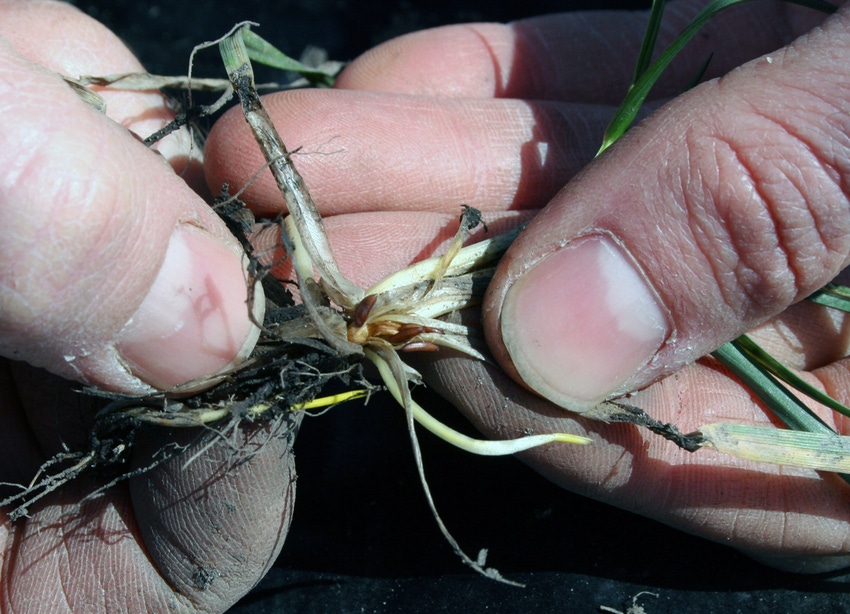January 4, 2016

Because of the warm weather, Hessian flies in wheat planted during October have already turned over a generation and are emerging and laying eggs. Larvae will hatch from these eggs and feed throughout the cold months, killing any tillers that survived the first generation. Chances are slim that ground applications can be made due to El Niño’s gift of water (and more forecasted).
If you can spray by air, here are some things to consider:
Spray only susceptible varieties. A list of high yielding varieties with Hessian fly resistance ratings (if known) can be found here.
Seed treatments have run out. They will not provide protection at this point, although they may have given you a head start by reducing initial populations.
Check your earliest planted wheat for Hessian fly larvae and pupae. A good way to do this is do take a shovel and carefully dig up plants. Keep all the soil on the shovel and dissect the plants. Focus in the soil on dead tillers that may have rotted; pupae and larvae may be harboring in these dead tillers that are not apparent on the surface.
See if you have eggs. There is no threshold for spraying eggs, although we are working on developing one. I get worried when there is at least one egg per tiller.
Spray as soon as you can if there are eggs, but not right before a rain. We think that the insecticide works best if you can get some residual to kill adults. It is possible that the insecticide can kill larvae when they hatch from the eggs and move down the leaf to feed below the soil surface. A spray targeted when eggs first show up should work the best if these assumptions are true. See this article for an efficacy trial.
Want the latest in ag news delivered daily to your inbox? Subscribe to Southeast Farm Press Daily. It’s free!
You May Also Like




